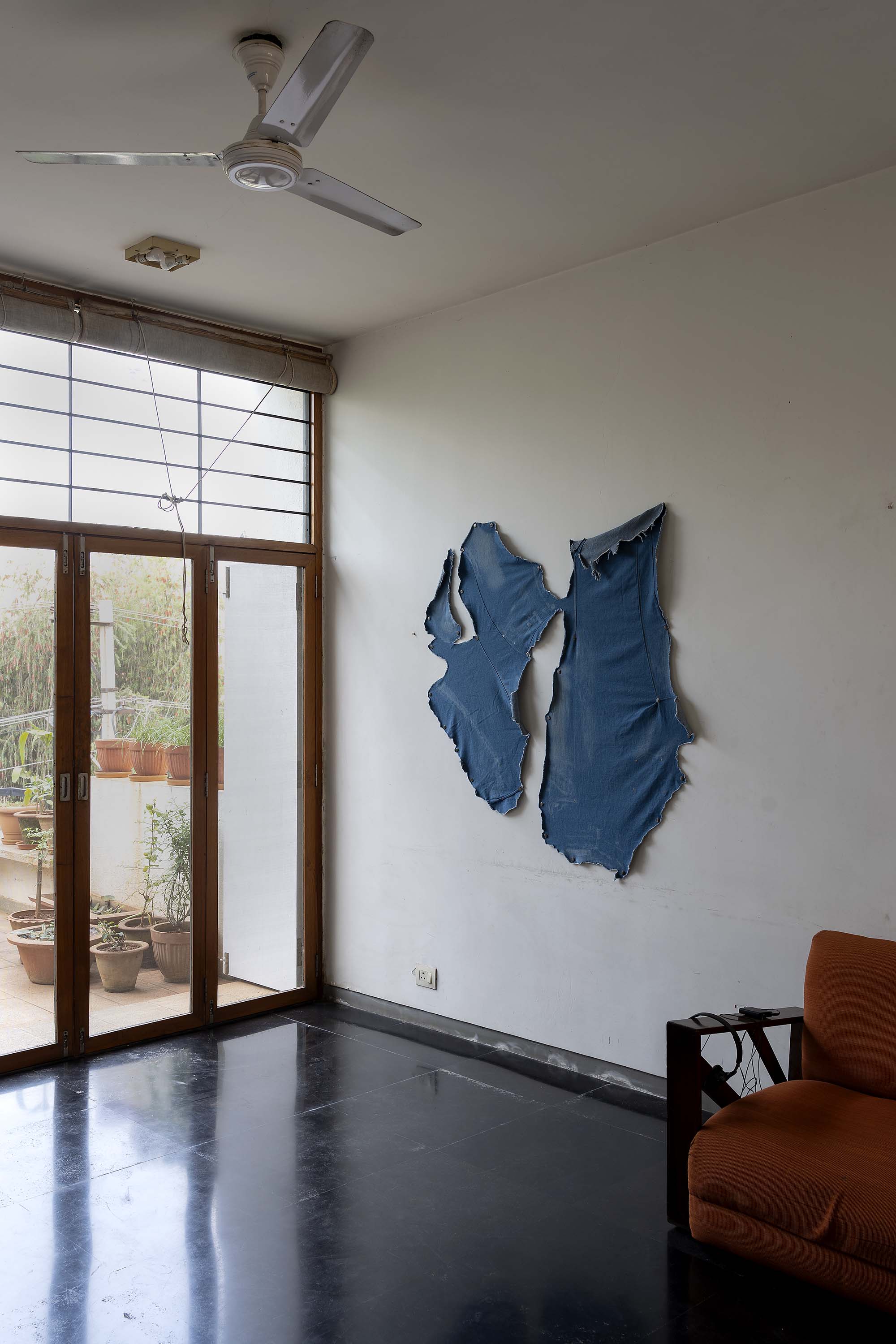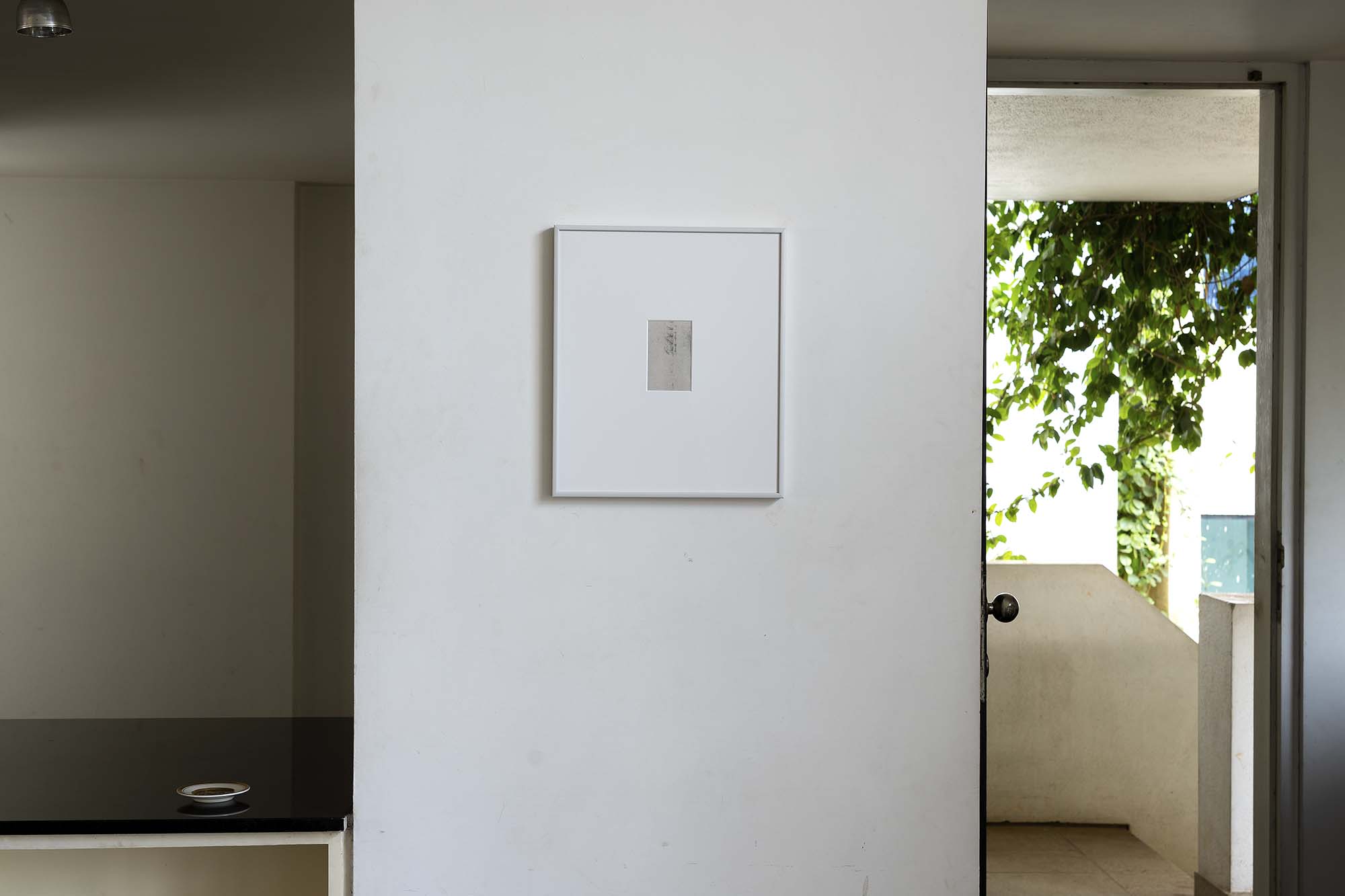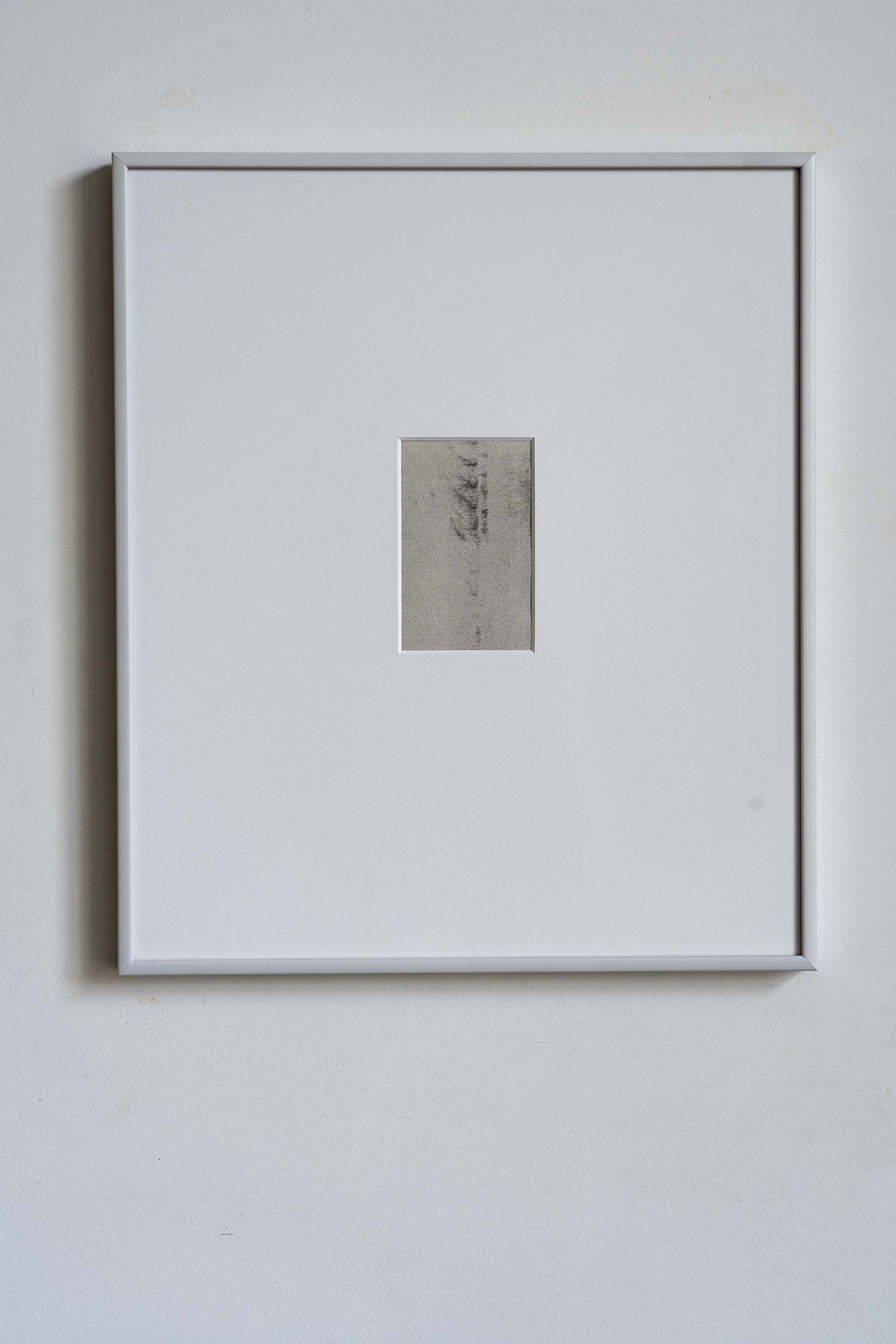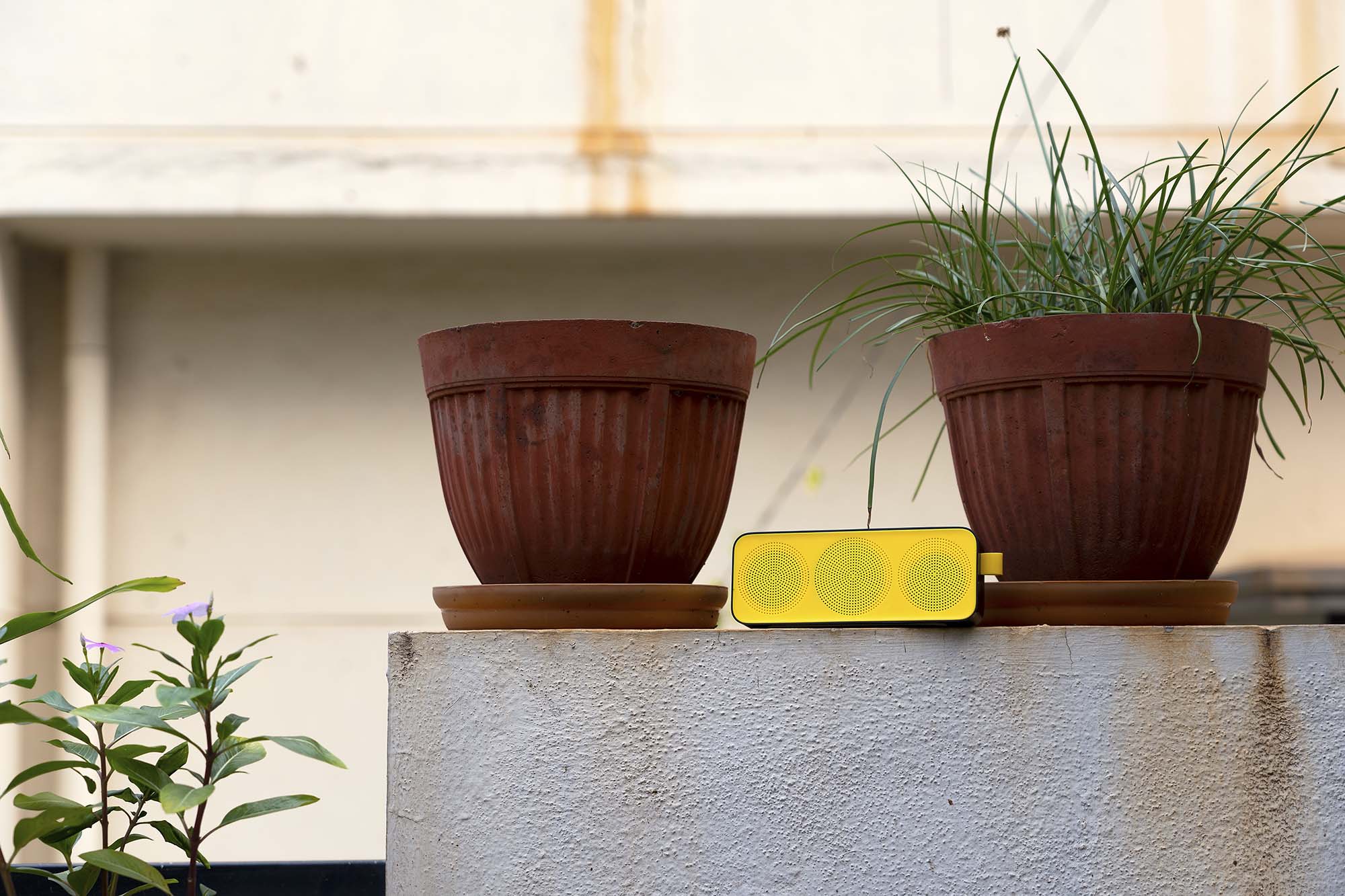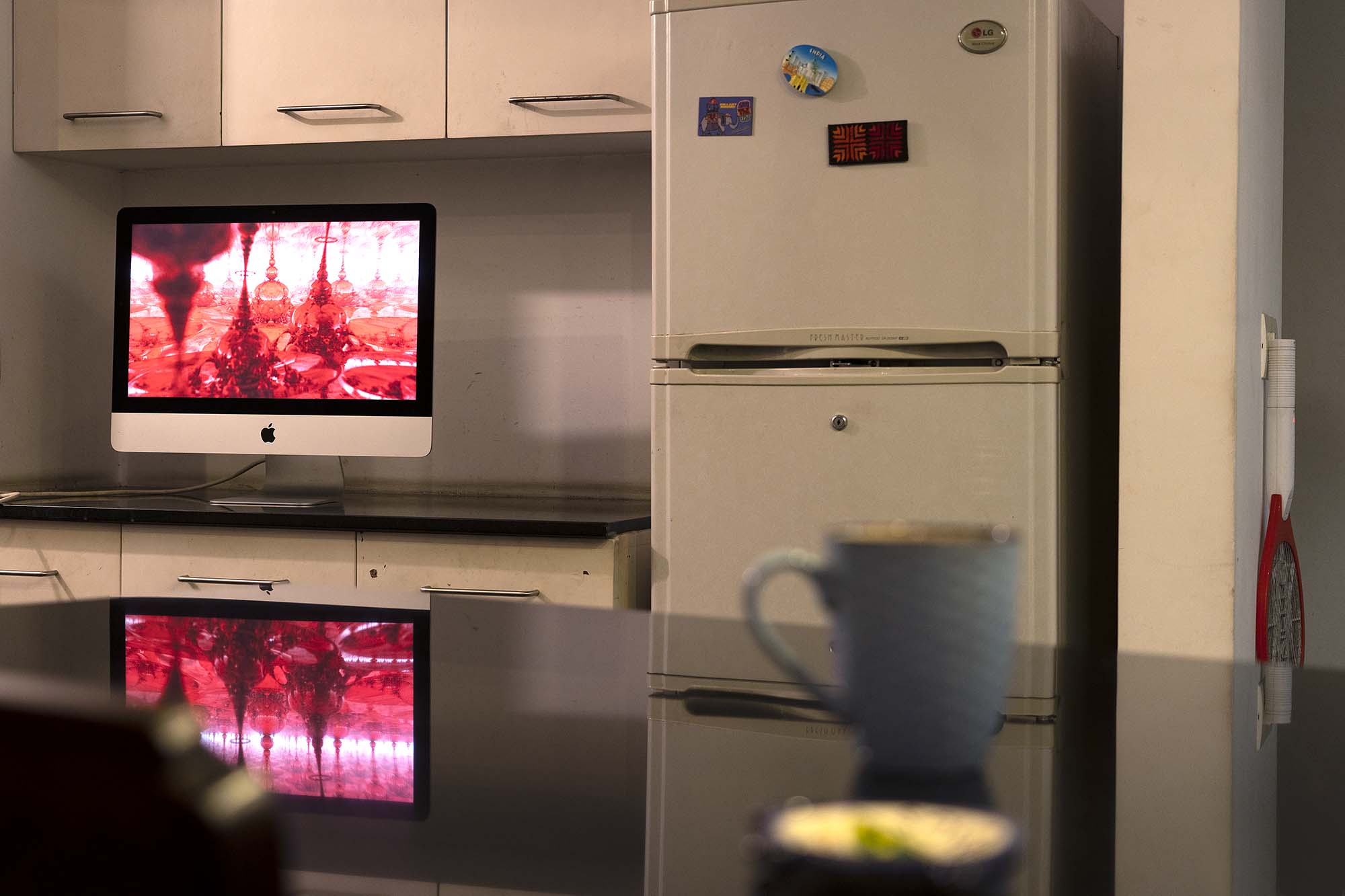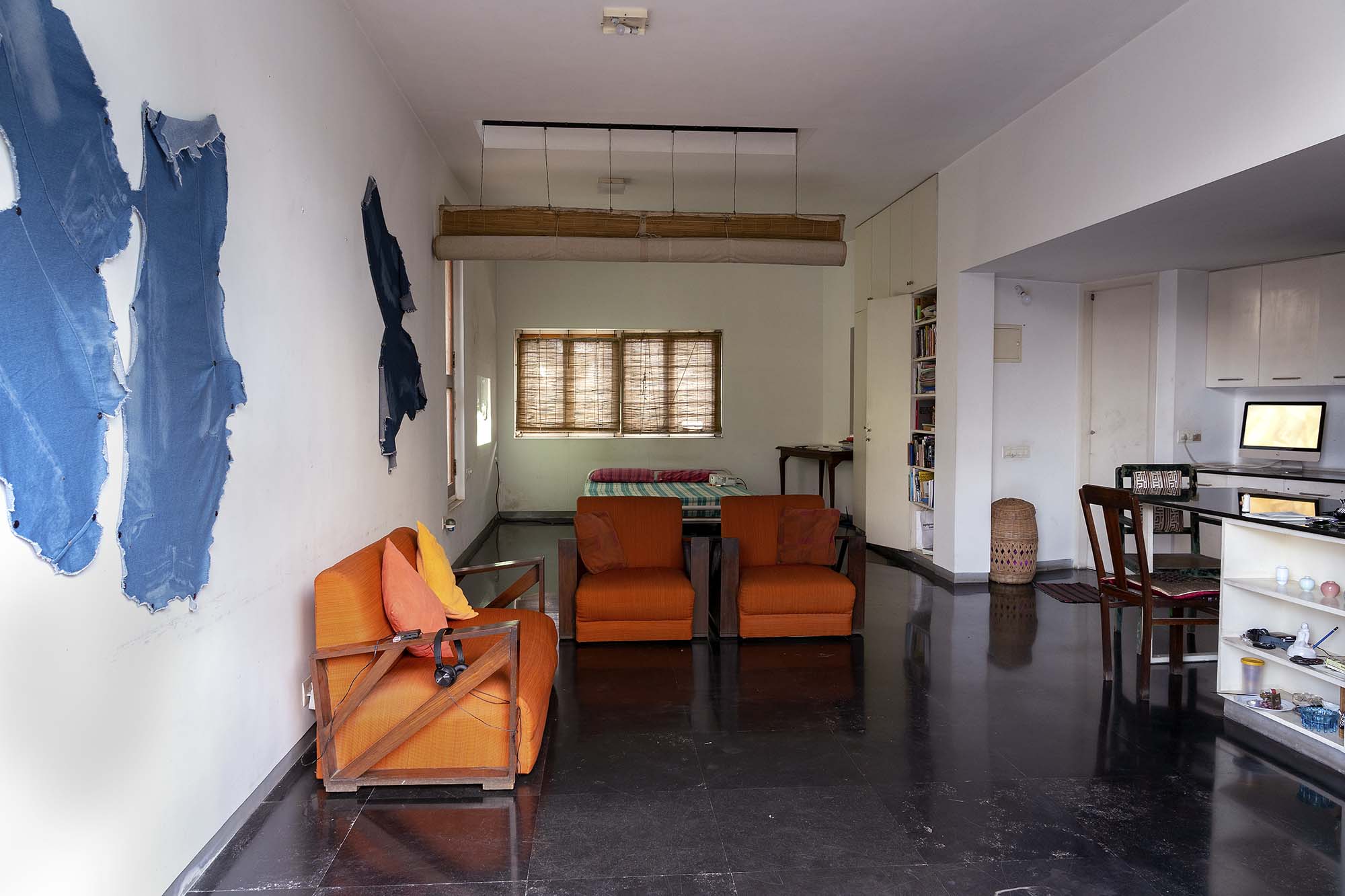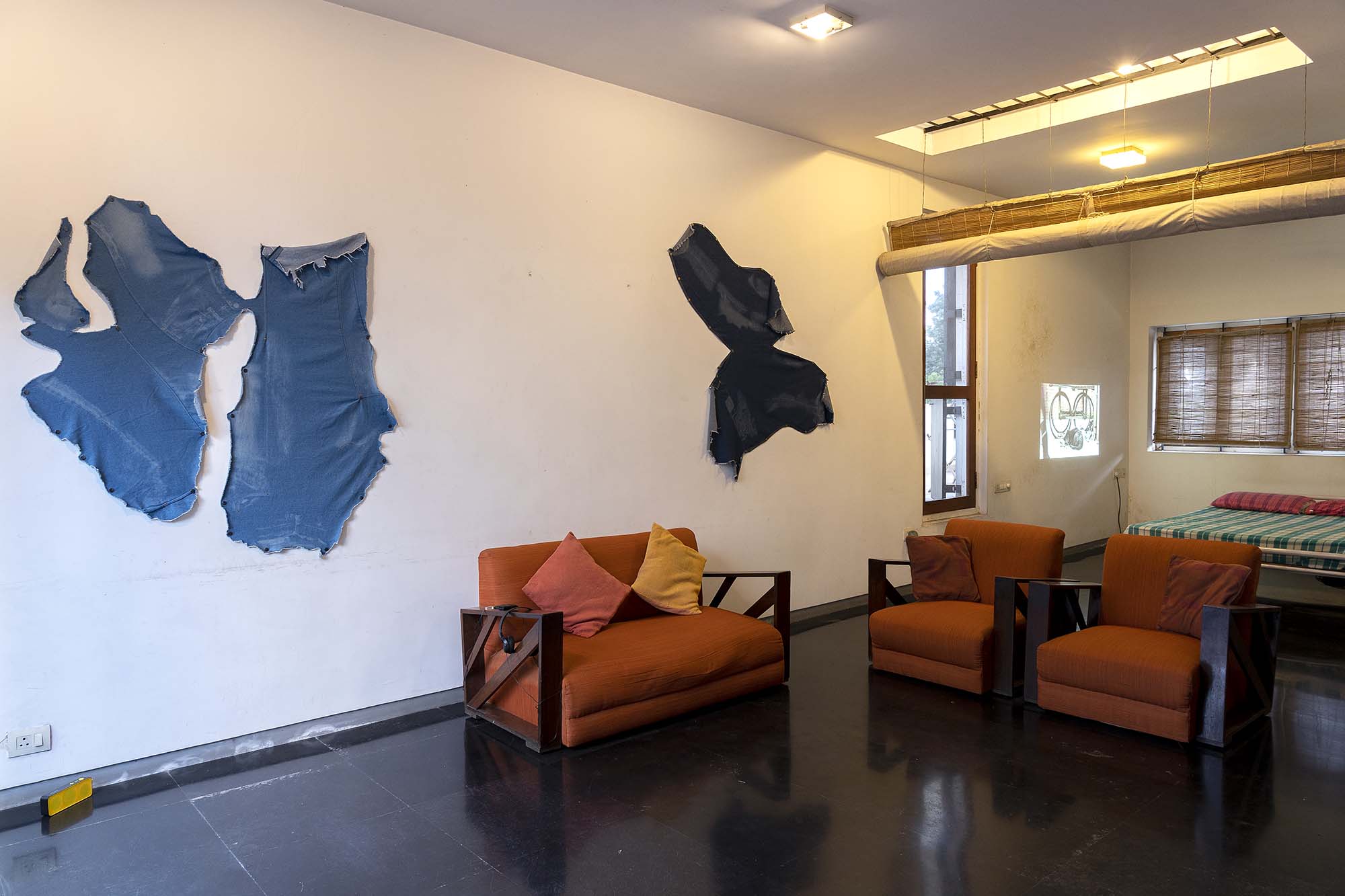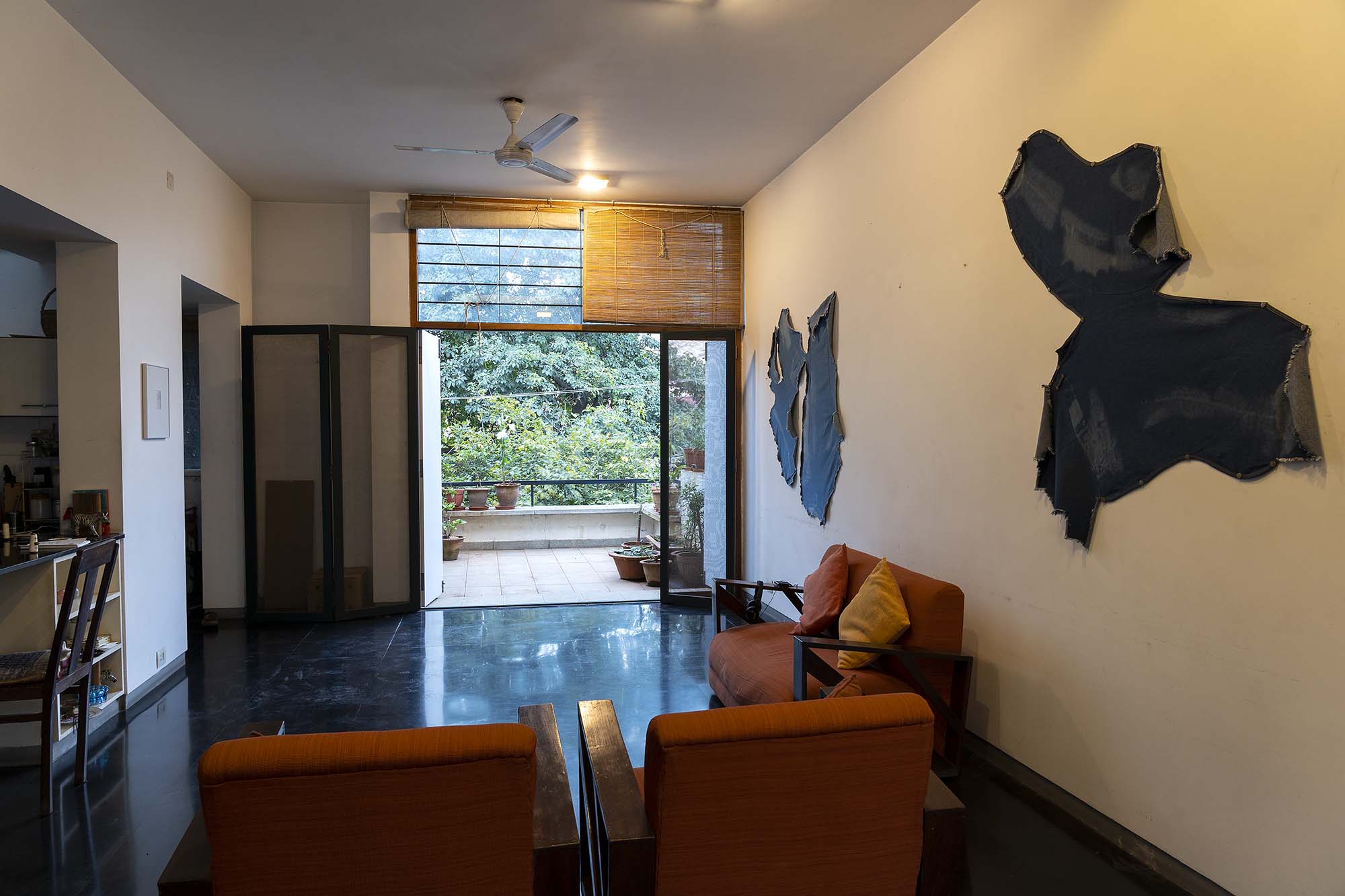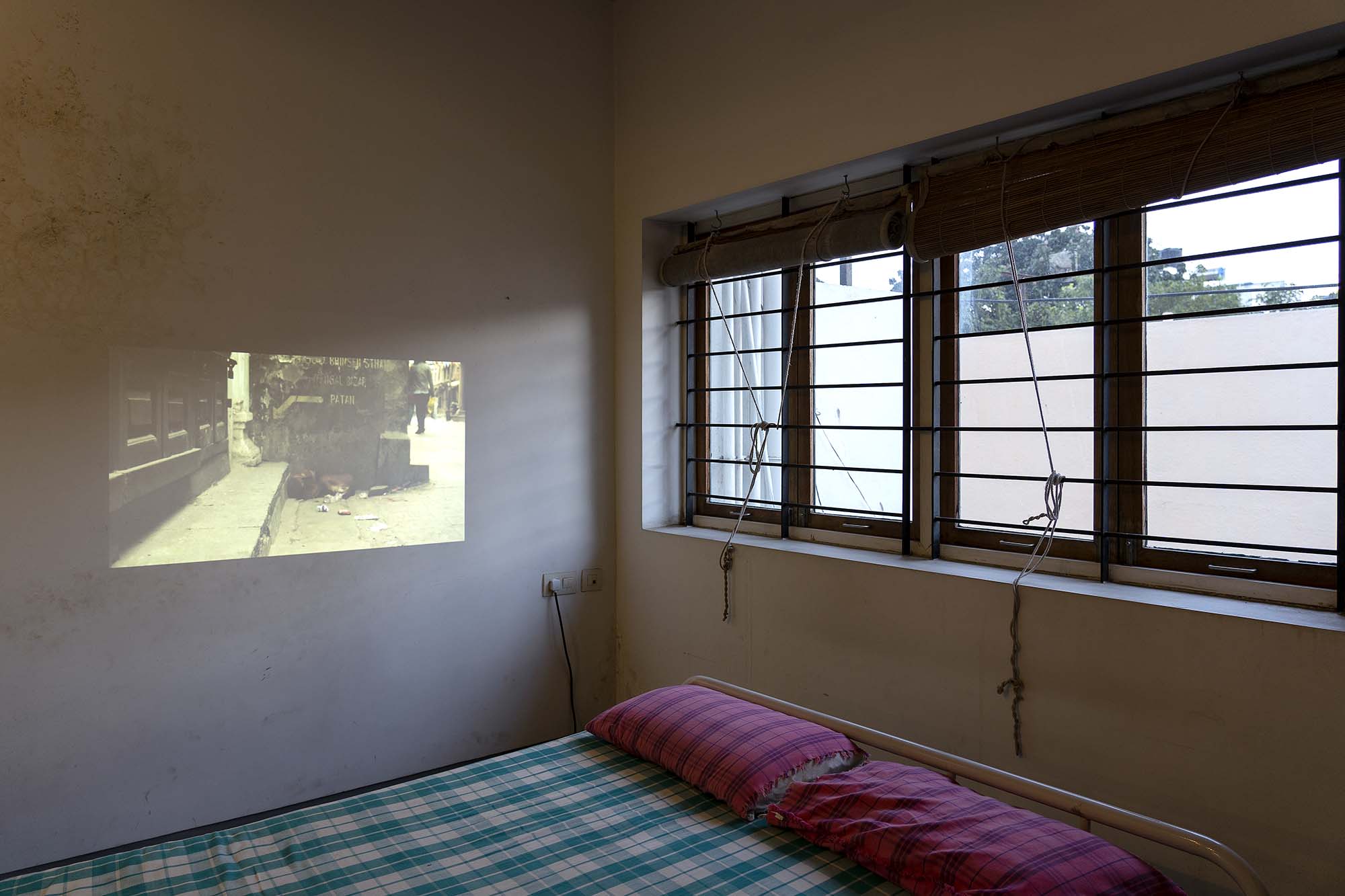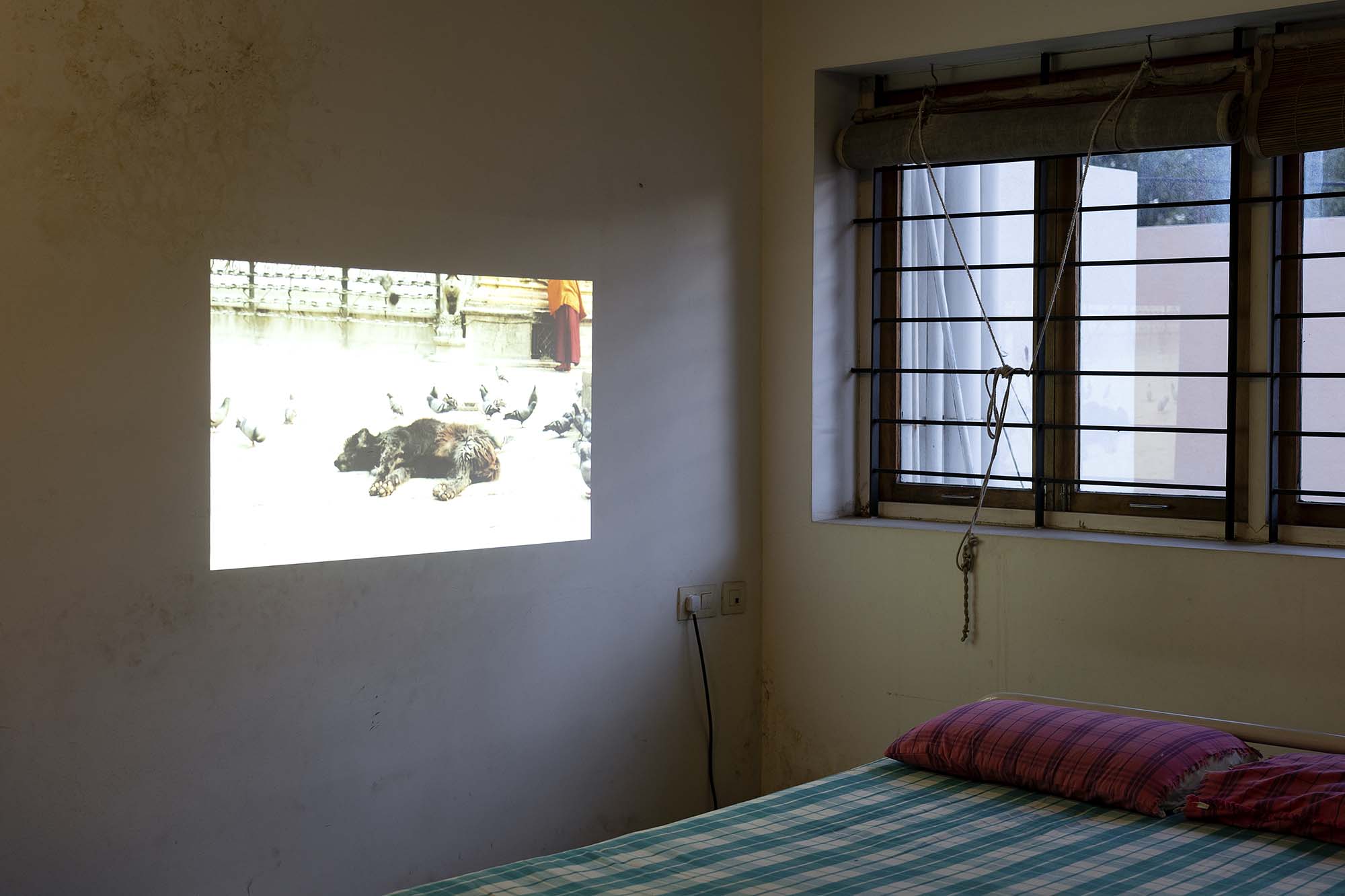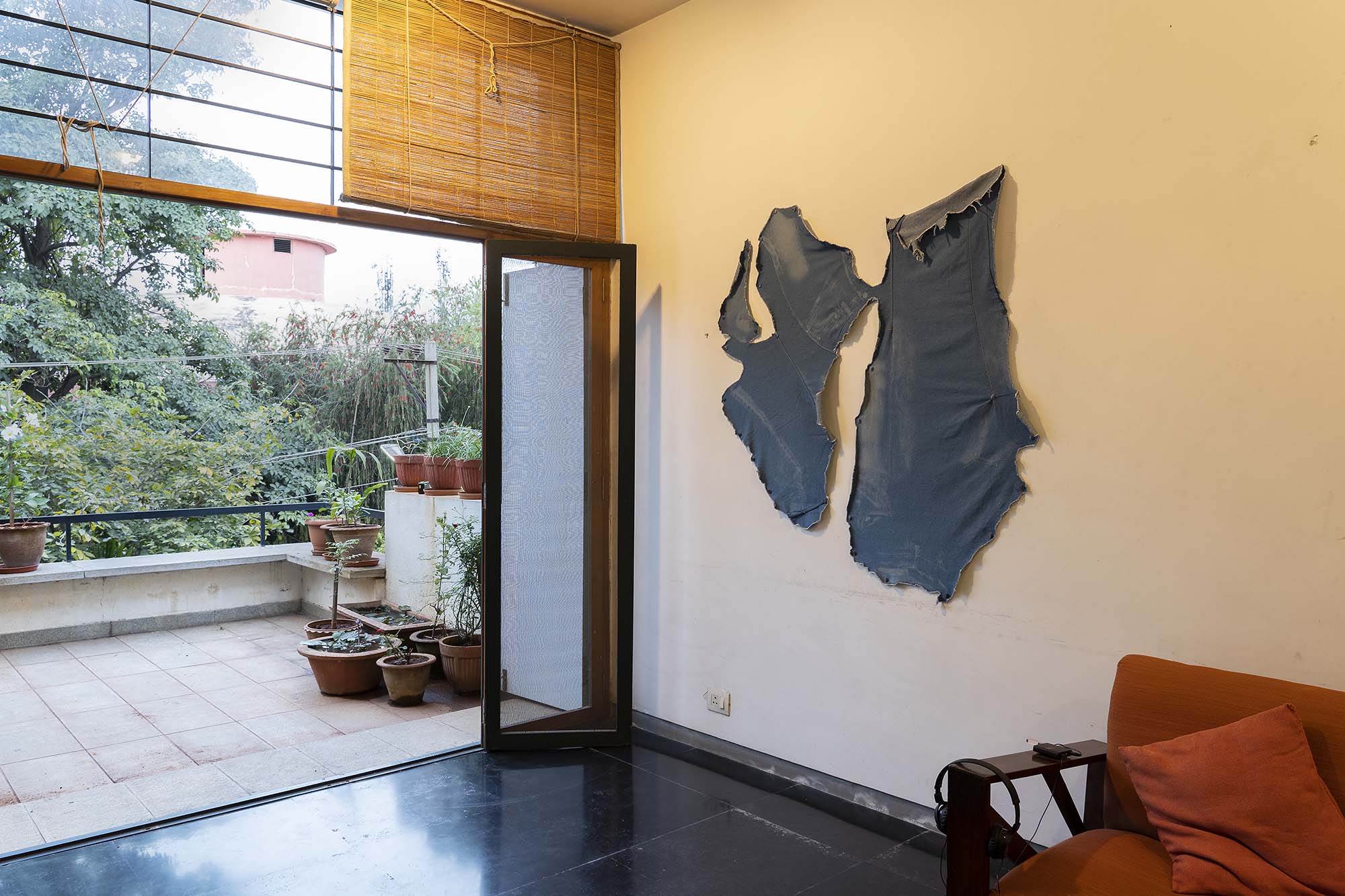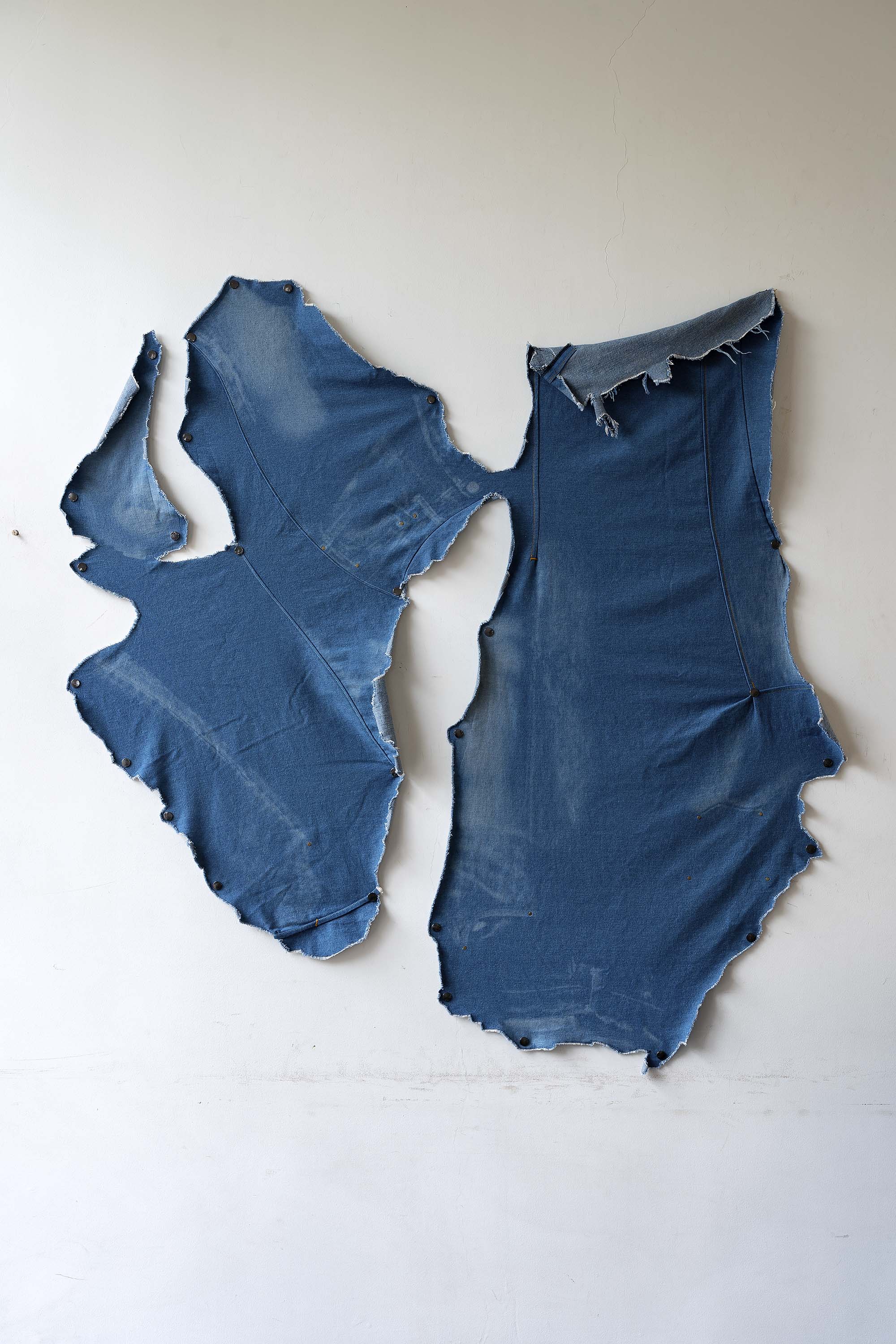12. Bangalore Flat
![]()

Though I haven’t been to Chinar’s apartment in Bangalore yet, from images she’s sent me, I know her place has a covered, tiled balcony, and from there you can see the various antennae and rooftop water heaters of other buildings, as well as the tops of trees, including a solitary palm. Its interior is a contrast—between the shiny polished look of the black floor, and the simple white walls. The sparse furnishings—a low pipe bed-frame painted white, a hanging woven room divider and curtains, a desk, table, chairs, refrigerator, gas cook-top, and a flatscreen that she tells me is for her mother to watch television when she visits—give the general impression of an airy and tidy studio apartment.
Seeing these images of Chinar’s flat from New York as a series of email attachments immediately brings to mind the feeling of looking (desperately at times, or aspirationally at others) for an apartment. Clicking through however many images of interrupted interiors, small details, or architectural impressions suggest something specific, one after another. I also think of all the Airbnbs I have booked for work and travel, and the precarity of this model of living and working. At the same time, Chinar’s generosity as a host, and our collective but dispersed conversation, becomes a provisional place to investigate the conditions of possibility for the upcoming show. This apartment in the “Silicon Valley of India” marks one specific site in the correspondence between me, Chinar, and the participating artists over the past several months and longer. Each work manifests through its own economy the constraints—of travel, distance, and material—that define the show.
I am traveling with Rubén Grilo and KRM Mooney’s works in my suitcase. The rest are digital files on a thumb-drive or in my email. Mooney’s piece, which fits neatly in the bottom of my suitcase, is a framed Risograph print, on newsprint, of a small cropped section of a larger spectrogram. The audio source for the spectrogram is from a field recording that was then rendered visually by an automated software process, compressing some strategies of Mooney’s site-specific sculptural practice into a travel-specific, print edition. Rubén sent me a box of three of his denim “skins.” For these pieces, raw denim is cut and shaved by laser-washing, a technology that connects Spain’s fast fashion corporations with Bangalore’s tech and textile sectors. Now, far from the jeans of 18th-century American industrial laborers, this laser-washed denim is the product of computer modeling processes. Three dimensions are rendered flat, and a lack of wear or use produces the appearance of having been worn.
Andrew Norman Wilson sent me a video that zooms into a series of 3-D fractal spaces designed by a fictional group of former artists. These are “environments” into which our thoughts can soon be uploaded, thereby liberating them from the troublesome politics of our fleshly realities. Our minds will inhabit a construct of pure aesthetic bliss. Sreshta Rit Premnath’s video, on the other hand, captures a different scene of habitation. Sleeping Dogs is a sequence of long, static shots, each capturing—without zoom, pan, fade, or other camera movement—street dogs sleeping in Kathmandu. The status of these city dwellers, beneath citizenship, depicts a contingent and vulnerable relation to urban space that contrasts the imagined, digital frontiers of a Californian ideology.
Vijay Masharani handed me two thumb-drives, each loaded with a new track created for this exhibition using the software, Ableton Live. The title of one of the tracks, “India Song”, references the 1975 Marguerite Duras film and samples its eponymous moody overture. Shot exclusively on a French estate, the cinematic aura of the fictional Indian setting is mostly indicated through foley sound, exotic birdsong, and the rustling of jade foliage—an audio visual texture that functions as a simple theatrical backdrop. Vijay re-uses the title, bringing Duras to India as a sample in a song evoking the style of laptop hip-hop beats that circulate globally on music sharing platforms. While the tracks are meant to be listened to at a high volume on headphones, the sound might also bleed beyond the confines of a solitary, over-the-ear experience, permeating the scene at Chinar’s home.
Mentions: http://www.enterpix.in/editorials/personal-paradigms/bangalore-flat/
Joseph Lubitz is the co-director of the Center for Experimental Lectures; was a Helena Rubinstein Curatorial Fellow in the Whitney Independent Study Program; and conducts research for the archives of Felix Gonzalez-Torres. He lives in Brooklyn, New York.
Seeing these images of Chinar’s flat from New York as a series of email attachments immediately brings to mind the feeling of looking (desperately at times, or aspirationally at others) for an apartment. Clicking through however many images of interrupted interiors, small details, or architectural impressions suggest something specific, one after another. I also think of all the Airbnbs I have booked for work and travel, and the precarity of this model of living and working. At the same time, Chinar’s generosity as a host, and our collective but dispersed conversation, becomes a provisional place to investigate the conditions of possibility for the upcoming show. This apartment in the “Silicon Valley of India” marks one specific site in the correspondence between me, Chinar, and the participating artists over the past several months and longer. Each work manifests through its own economy the constraints—of travel, distance, and material—that define the show.
I am traveling with Rubén Grilo and KRM Mooney’s works in my suitcase. The rest are digital files on a thumb-drive or in my email. Mooney’s piece, which fits neatly in the bottom of my suitcase, is a framed Risograph print, on newsprint, of a small cropped section of a larger spectrogram. The audio source for the spectrogram is from a field recording that was then rendered visually by an automated software process, compressing some strategies of Mooney’s site-specific sculptural practice into a travel-specific, print edition. Rubén sent me a box of three of his denim “skins.” For these pieces, raw denim is cut and shaved by laser-washing, a technology that connects Spain’s fast fashion corporations with Bangalore’s tech and textile sectors. Now, far from the jeans of 18th-century American industrial laborers, this laser-washed denim is the product of computer modeling processes. Three dimensions are rendered flat, and a lack of wear or use produces the appearance of having been worn.
Andrew Norman Wilson sent me a video that zooms into a series of 3-D fractal spaces designed by a fictional group of former artists. These are “environments” into which our thoughts can soon be uploaded, thereby liberating them from the troublesome politics of our fleshly realities. Our minds will inhabit a construct of pure aesthetic bliss. Sreshta Rit Premnath’s video, on the other hand, captures a different scene of habitation. Sleeping Dogs is a sequence of long, static shots, each capturing—without zoom, pan, fade, or other camera movement—street dogs sleeping in Kathmandu. The status of these city dwellers, beneath citizenship, depicts a contingent and vulnerable relation to urban space that contrasts the imagined, digital frontiers of a Californian ideology.
Vijay Masharani handed me two thumb-drives, each loaded with a new track created for this exhibition using the software, Ableton Live. The title of one of the tracks, “India Song”, references the 1975 Marguerite Duras film and samples its eponymous moody overture. Shot exclusively on a French estate, the cinematic aura of the fictional Indian setting is mostly indicated through foley sound, exotic birdsong, and the rustling of jade foliage—an audio visual texture that functions as a simple theatrical backdrop. Vijay re-uses the title, bringing Duras to India as a sample in a song evoking the style of laptop hip-hop beats that circulate globally on music sharing platforms. While the tracks are meant to be listened to at a high volume on headphones, the sound might also bleed beyond the confines of a solitary, over-the-ear experience, permeating the scene at Chinar’s home.
Mentions: http://www.enterpix.in/editorials/personal-paradigms/bangalore-flat/
Joseph Lubitz is the co-director of the Center for Experimental Lectures; was a Helena Rubinstein Curatorial Fellow in the Whitney Independent Study Program; and conducts research for the archives of Felix Gonzalez-Torres. He lives in Brooklyn, New York.
